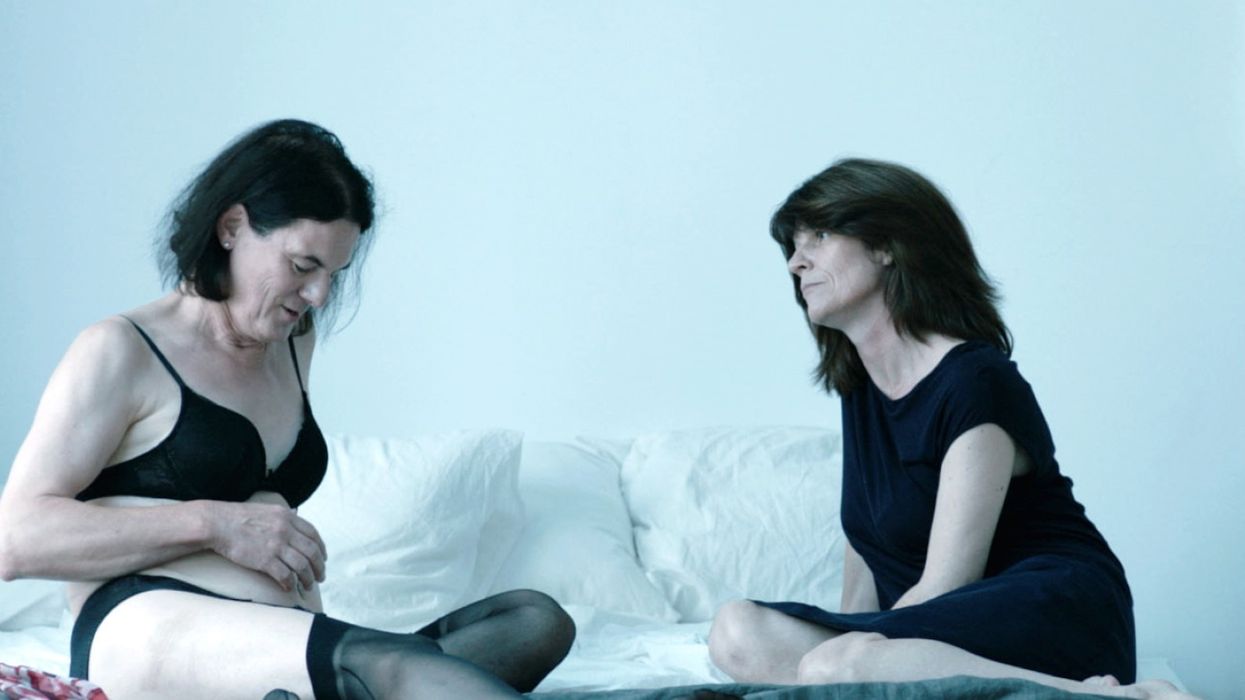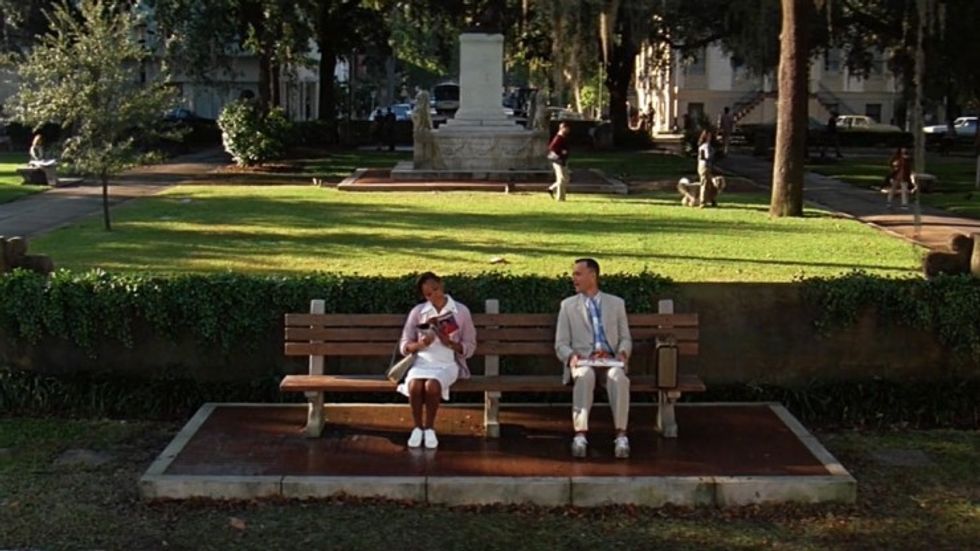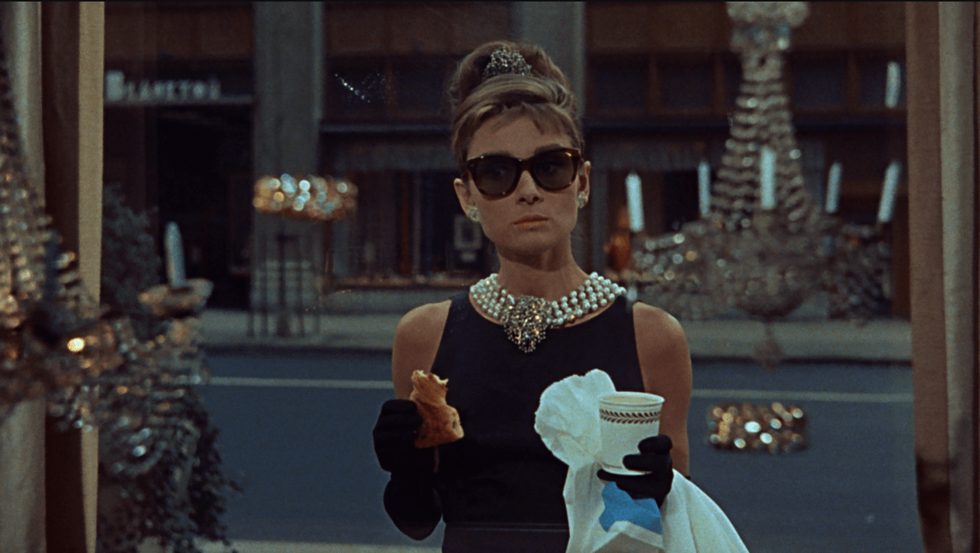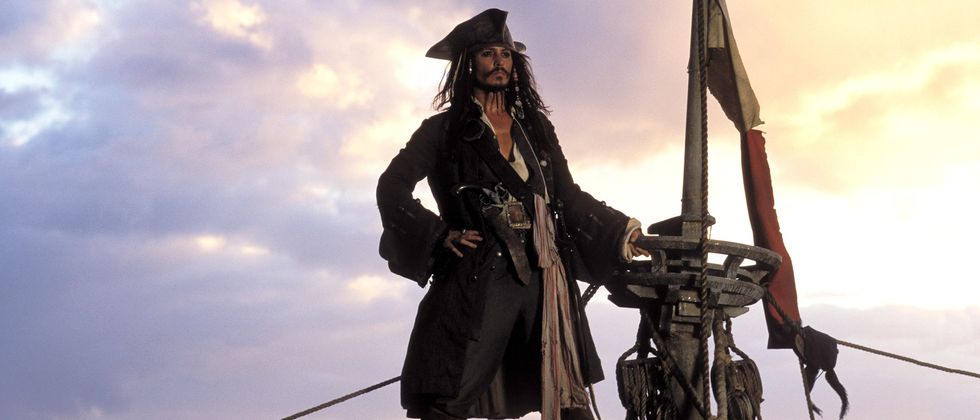Defining the Cinematic Language of Intimacy: Adina Pintilie on 'Touch Me Not'
"When I was I was 20 years old, I thought I knew how things went."

Adina Pintilie’s feature debut Touch Me Not offers a compelling documentary/fiction hybrid portrait of various sexual identities. The film, which won the Golden Bear and Best First Feature awards at the Berlinale (and made its North American premiere at TIFF), defies easy description, creating a visceral atmosphere from scenes of intimacy workshops, sex clubs, and meta footage of Pintilie herself.
Pintilie doesn’t shy away from topics too often considered taboo, presenting disabled people and sex workers as figures perfectly capable of sharing their own experiences. Instead of ticking off the boxes of inspirational clichés, Pintilie leaves her often-uncomfortable tableaux open to interpretation.
The film is currently playing in New York at the Museum of Modern Art and opens in Los Angeles on March 1st, and so No Film School spoke with the director about the unique film’s origins and psychological complexities.
No Film School: How did the idea for the film come about?
Adina Pintilie: When I was I was 20 years old, I thought I knew how things went. I guess you hear me say this in the movie. I had all kinds of certainties about how relationships worked and how intimacy and desire functioned, and what beauty was. But then in real life, 20 years after that, I saw that things were much more complex than I had expected and I realized I actually didn’t know much. So the whole film started out of this intention to try to forget everything I thought I knew and to rediscover what intimacy is and how people relate. The reality of intimacy doesn’t really correspond to the utopian idea we grow up with.
"It didn’t matter if the protagonists were professional actors. They are all professional human beings."
NFS: You work with a mix of actors and non-professionals. How did the cast come together?
Pintilie: This whole film started as a sort of personal research process. It didn’t matter if the protagonists were professional actors. They are all professional human beings. So we worked with our human material.
When I was looking for them it wasn’t like a regular casting. It was more like searching for people that were on the same wavelength as I am, with similar interests. It was very important for me to feel that each of them had a very strong emotional motivation to be part of our research. Each of them came into the project with a certain need to share something and to discuss something. It's not just research with ourselves; it’s research via cinema, with a camera and an audience.

NFS: What was the process of writing the film like? It’s difficult to tell how much of the dialogue is written and how much arises organically from the documentary situations.
Pintilie: This was one of the biggest challenges of the whole process. The strength and power of the whole experience comes from this ambiguous zone. It started as a personal project but I think it ends up transcending the personal.
We worked with a fusion of reality and fiction, with a mix of personal stories that each of us brought into the project and different approaches to working with reality such as family constellations and reenactments of dreams and memories or “pre-enactments” of fears about the future. Basically, you pick up situations from your life or dreams or fears and then with the collaborators you enact them. You have the situation reenacted in front of you so you can look at it with a certain distance. I wouldn’t quite call it objectivity. This often gives you very interesting insight into yourself.
Very often, in a strange way, the whole process was like a laboratory. The fiction functioned as a sort of safety structure that brought us all together. It created a safe place where we could go to places which otherwise would have been very uncomfortable to go to in regular fiction or regular documentary. In regular fiction, you have written characters and are somehow separated from yourself. In a way, you’re the prisoner of a fictional character. In documentary, you are a prisoner of your daily persona. If you’re in the presence of a camera, you can become very afraid of who you are and being judged.
This place that we created in the film functioned in a way where each character could bring material into the story and nobody needed to know exactly where it came from. It was sort of a convention to protect the privacy of the participants. So you bring in material but you never mention where it comes from or if it’s real or imagined. This allowed for a huge degree of freedom.
NFS: And then there’s the framework of you including yourself in the film and showing some of the recording.
Pintilie: This film didn’t only challenge my own preconceived ideas about intimacy and sexuality but it also challenged my preconceived ideas about what language could do. It was an interesting and difficult journey, finding the right cinematic language.
From the very beginning of the process, there was this idea of dialogue with the viewers, but not necessarily via the presence of the camera and myself in the film. So to create this direct dialogue, we had to use a teleprompter. This device has an emotional quality because it allows the protagonist to see me in the lens when talking to me. There’s a direct eye contact with me and implicitly with the viewer. The initial structure of the film was a mix of moments where we followed the experiences of the characters and moments of talking to you directly.
I made the first draft and, to my huge surprise, those moments when they were entering into a dialogue with me functioned completely in the opposite way. Instead of creating an emotional connection with the viewer, they had a Brechtian effect, totally distancing you and taking you out of the flow as a viewer. It took me a very long time to understand why this was happening. After getting feedback and working with psychotherapists, I came to understand that the way we experience cinema is very deeply ingrained in our psyche. So when we go to the cinema, it doesn’t matter if it's nonfiction or fiction or experimental. You basically separate from yourself and you enter into the bubble of the story on screen. There is a reality out there separate from your reality. It’s disconnected.
For us, it was very important that the separation did not exist. It was very important that, at all points, you are aware of being in a film. The camera provides privileged access to the life of these people and invites you in to the same process of self-reflection and questioning all of your ideas. This is why the film can be quite uncomfortable for the viewer. This kind of dialogue in which you are invited in makes the film become a sort of mirror. In the mirroring process, you are challenged in exactly the areas where you usually feel comfortable and certain. I think a self-reflective challenge can be interesting.
Basically it became absolutely necessary to put the camera in the film as a kind of communicative bridge between the two worlds. This is why, from the very beginning of the film, we introduced the device and how it’s made so you could understand very clearly what you look at and where you are. We set a solid ground where the viewer could start from.
Initially, my position in the film and the camera presence was just as an observer because I never thought the process of the filmmaker was a priority. The main priority was always all these fascinating human beings that I’ve discovered and how they relate in this world and how bodies can be beautiful even if they don’t look like the Greek ideal. There’s a sense of wonder of discovery.
But I was going through the same process as everybody else. So in the second stage when I introduced the camera as a witness, it didn’t work because it put the filmmaker and the camera in a position of distance. The protagonists were putting their soul on the table and taking emotional risks. They had great generosity to share with the camera. It felt unbalanced. The reality of the process was completely different because I was going through the same challenges as everybody else.
It became organically necessary to have a part of my process and motivation in the film because I function more like an emotional trigger of the process. It was not like a choice. It felt like something that had to happen.

NFS: What has the audience response been like?
Pintilie: It’s been very interesting. Right after the Berlinale, there was a very divisive reaction in the press. We had really wonderful reviews from The Hollywood Reporter and Sight & Sound, but we also had a terrible one from The Guardian. There was this strong divisive reaction in the professional press and there was a lot of resistance during the whole process of making the film due to the challenge of the topic.
The body and sexuality and intimacy are major aspects of our lives, but we find them so difficult to talk about because of all the taboos and blockages. So this was one challenge. But then there’s also the challenge of language because we didn’t use classical storytelling. It’s an emotional type of storytelling, experiential, sensorial storytelling.
The film was an unpredictable animal from the very beginning. I think there was a natural type of resistance out of fear. There was always an expectation that this film would be difficult for an audience, but often they really seem to be open to it, especially people who have nothing to do with the cinema. It’s true that it can be difficult for them to articulate what they feel (and very often they have mixed feelings) but many people come up to us after like they’ve known us for a lifetime and share personal experiences.
One of the psychotherapists we worked with explained that a strong, visceral reaction not always articulated in words comes from the film entering into a sort of dialogue with the limbic system. That reptilian brain is responsible for preverbal memories and primal emotions. We had incredible situations when people opened up and came to us to ask for advice. I often say, "Well, we’re not all therapists but we share our own experience and hope that inspires and empowers the viewers. We can open up in them the same self-search that was offered to us."
For more information on 'Touch Me Not,' click here.














